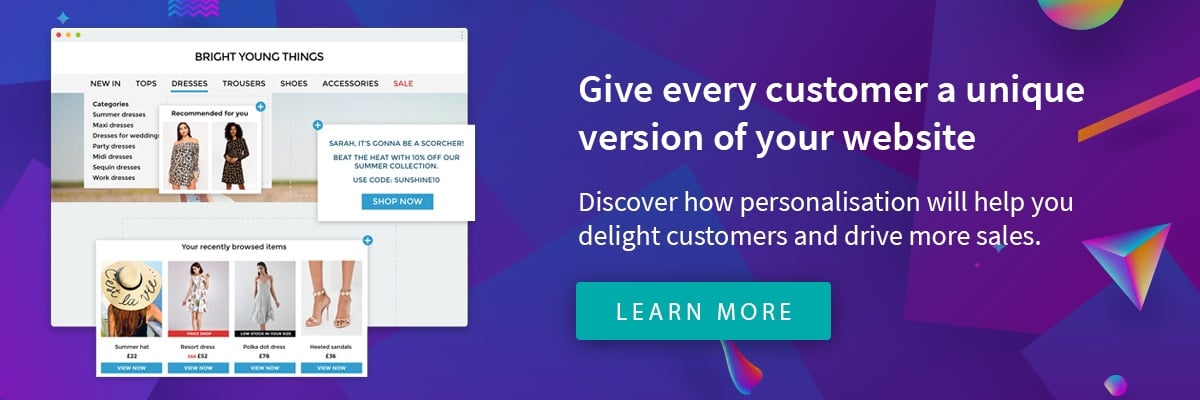Website and email personalisation is a core part of providing an outstanding customer experience.
When a brand offers experiences tailored to each consumer’s specific needs, they are more likely to continue their journey with that brand. And yet, not every brand is taking advantage of this trend—according to Econsultancy, 38 percent of companies are not undertaking any personalisation.
This is, in part, due to a lack of investment in personalisation technology. If you are considering investing in personalisation tools for your company, equipping yourself with some key statistics can help you judge the sort of return on investment you can expect.
In this blog post we explore seven reasons why personalisation is important, supported by figures taken from industry research.
1) Website personalisation increases conversion rates
When you tailor content to a specific target audience based on their behaviour, or demographics, your message is much more persuasive. This is why personalised content makes people more likely to convert.
Research from Econsultancy found that 93 percent of companies see an uplift in conversion rates from personalisation.
2) Homepage personalisation increases sales
Tailoring content to people’s individual needs increases sales. And the homepage is a place where personalisation can have a big effect.
Helping people to find what they want quickly by showing them products based on their interests and past behaviour makes them more likely to buy. Having a personalised homepage can increase sales by 7 percent.
The retail site Very is ahead of the game when it comes to homepage personalisation, as the example below shows.
3) Product recommendations are effective
One of the most effective personalisation tactics is product recommendations. People like to be shown products that fit with their personal preferences and are aligned with what they’ve purchased previously.
Internet Retailer found that 80 percent of consumers like it when emails they receive from retailers recommend products to them based on previous purchases.
What’s more, production recommendations aren’t just a consumer preference—they lead to an increase in sales. One study found personalised recommendations in email campaigns and product pages increased sales by 3.5 percent.
This example from Clinique puts personalised product recommendations into action.
4) Lack of personalisation frustrates consumers
Does your website or shopping basket have a high abandonment rate? It could be that a lack of personalisation is driving customers away.
Not only do customers enjoy product recommendations and other personalisation features, but the vast majority find a lack of personalisation irritating. Loyalty 360 reports that 74 percent of customers feel frustrated when website content is not personalised.
5) Personalisation influences what people buy
Research by Infosys uncovered 59 percent of consumers who experienced personalisation say that it significantly influenced what they purchased.
Further reading: 30 Email Marketing Statistics to Shape Your Strategy
So, it’s fair to say companies that are not equipped with personalisation technology at are at a disadvantage when it comes to their ability to influence purchase decisions.
6) Personalised offers affect brand preference
Personalisation can influence which brands people prefer. Research by PWC uncovered 12 percent of online shoppers chose their favourite retailer because of personalised offers.
In this way getting personalisation offers right could increase your market share, with more customers preferring your brand over competitors. Having the technology in place to power personalised offers is the first step towards increased brand preference.
7) Personalisation builds loyalty
In an increasingly competitive landscape, building customer loyalty is one of the biggest challenges marketers face. And if they aren’t personalising they may well be missing a trick.
According to research by Smart Focus, 50 percent of consumers would be more likely to use retailers again if they were presented with personalised offers and information.
Further reading: 30 Email Marketing Statistics to Shape Your Strategy
Takeaway
As each of these seven statistic-backed reasons show, personalisation is incredibly beneficial to your bottom line—and its ability to increase your revenue is only set to grow. Gartner have predicted that by 2020, personalisation technology that recognises customer intent will enable digital businesses to increase profits by up to 15 percent.



